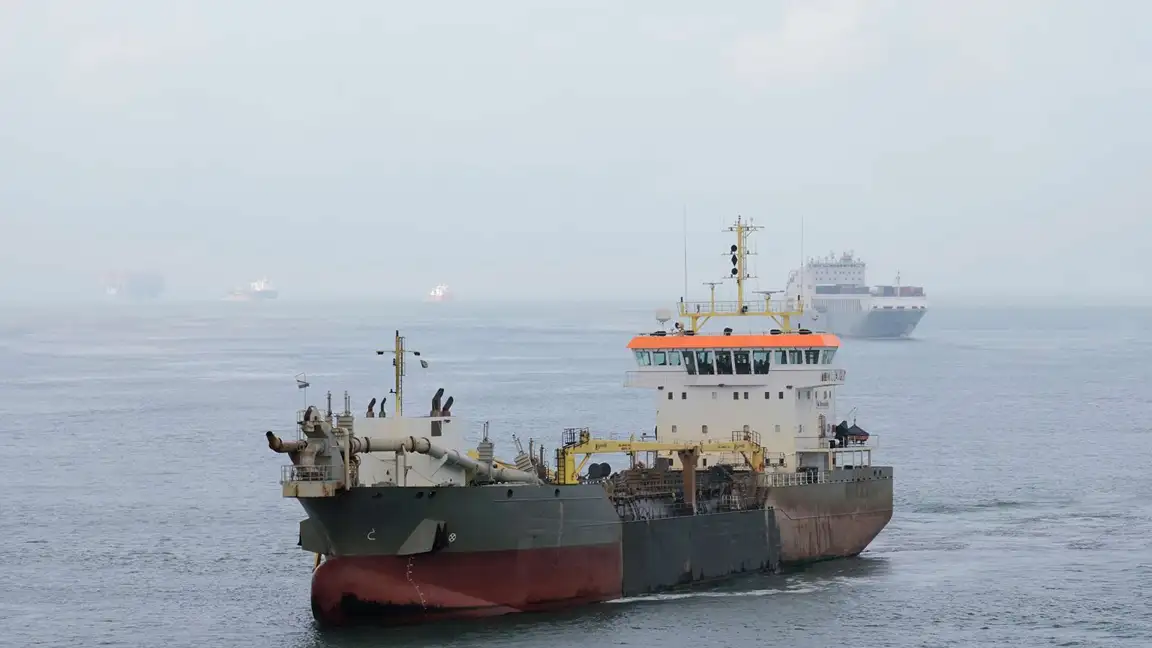Introduction
As climate change accelerates, nations across the globe are grappling with rising sea levels and extreme weather events. The Netherlands, a country renowned for its water management expertise, faces an especially urgent challenge due to its low-lying terrain. Protecting the Dutch coastline is not only a matter of national security but also crucial for preserving communities and ecosystems.
In response, Boskalis, a global leader in dredging and maritime services, has deployed a trio of its most capable trailing suction hopper dredgers (TSHDs)—the Causeway, Freeway, and Shoalway—to reinforce the country’s vulnerable shores. This strategic operation demonstrates both innovation and commitment to long-term coastal defense.
The Challenge of Protecting the Dutch Coastline
Nearly one-third of the Netherlands lies below sea level, making it one of the most flood-prone countries in the world. Coastal erosion, sea-level rise, and increasingly violent storms threaten not only the landscape but also critical infrastructure and densely populated areas.
The Dutch government, along with trusted partners like Boskalis, has made coastal protection a national priority. Through proactive beach nourishment and advanced dredging techniques, they aim to safeguard the nation’s future. This latest project is a continuation of ongoing efforts to strengthen natural and man-made defenses against the sea.
Boskalis and Its Coastal Defense Mission
Boskalis has long played a central role in maintaining and improving the Dutch coastline. Known for its innovative solutions in maritime infrastructure, the company routinely takes on large-scale projects around the world—but its work at home is especially vital.
The company’s beach replenishment initiatives help counteract erosion and maintain buffer zones that absorb wave energy. By distributing dredged sand back onto beaches and coastal zones, Boskalis helps extend the life of natural defenses while also enhancing habitat resilience. The triple dredger deployment highlights the scale and precision of their operations.
Meet the Dredging Trio – Causeway, Freeway, and Shoalway
The Causeway, Freeway, and Shoalway are sister ships built for efficiency, strength, and versatility in coastal maintenance. As TSHDs, they are equipped with powerful suction pipes and hopper holds designed to collect, transport, and redistribute sediment.
These vessels have a history of working together effectively, particularly along the Dutch coast. Their synchronized operations increase productivity and ensure even sand distribution across targeted areas. This coordination is crucial for comprehensive beach nourishment and consistent shoreline reinforcement.
The Rainbowing Technique Explained
One of the standout features of this operation is the use of a method called rainbowing—a dramatic and efficient dredging technique where sand and water are pumped in an arc from the ship’s bow onto the shore. This method gets its name from the curved plume that resembles a rainbow.
Rainbowing allows for precise placement of sand, especially in areas where access is limited. It’s ideal for shallow coastlines, making it perfect for reinforcing beaches in the Netherlands. Not only does it speed up the dredging process, but it also minimizes environmental disturbance compared to more invasive methods.
Focused Operations: Zeeland, North Holland, and Ameland
The current coastal defense project is taking place in three key regions: Zeeland, North Holland, and the Wadden Island of Ameland. Each area presents unique challenges and strategic importance.
- Zeeland: Known for its tidal inlets and barrier islands, Zeeland requires ongoing attention to counteract strong tidal currents and erosion.
- North Holland: A densely populated region, coastal strengthening here protects thousands of homes, businesses, and agricultural areas.
- Ameland: This fragile Wadden Island is both a natural treasure and a frontline defense point, requiring careful nourishment to maintain its ecological and protective roles.
By working in these locations, Boskalis ensures a broad, resilient coastal line that guards against short-term threats and long-term environmental shifts.
Protecting Homes, Infrastructure, and Ecosystems
Coastal protection is more than a technical necessity—it’s about preserving lives, livelihoods, and biodiversity. Each meter of replenished beach helps buffer storm surges, reduce inland flooding, and sustain wildlife habitats.
The regions benefiting from this operation are home to tens of thousands of people and countless ecosystems. Replenishing and reinforcing the coast reduces the risk of catastrophic damage during storms and enables the landscape to absorb and adapt to changing conditions.
The Future of Coastal Defense in the Netherlands
Looking ahead, the Netherlands remains committed to climate adaptation and innovation. Boskalis will continue to play a pivotal role in these efforts, exploring new technologies like autonomous dredging systems, real-time monitoring, and environmentally sensitive practices.
By combining engineering expertise with ecological awareness, Boskalis and its partners are not only defending the coast—they’re shaping a sustainable model for other coastal nations to follow.
Conclusion
The Dutch coast stands stronger today thanks to the coordinated efforts of Boskalis’ dredging fleet. The Causeway, Freeway, and Shoalway have demonstrated that precision engineering and environmental stewardship can go hand-in-hand.
Through techniques like rainbowing and year-round commitment to beach nourishment, Boskalis is not just reacting to threats, but actively preparing for a more resilient future. In a world of rising seas and climate uncertainty, their work offers both protection and hope.
